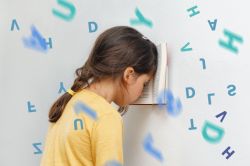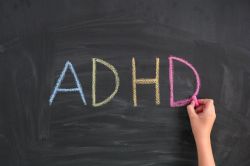Every brain has its own rhythm. The way it responds to light, sound, scent, or touch is shaped by its inner sensitivity and the connectivity of its neural networks. For some people, these sensations are stronger, more layered, and sometimes overwhelming - their brain doesn’t just process the world, it experiences it differently. This natural variation is called neurodivergence.
A Brain That Perceives Differently
The term neurodivergence refers to the natural diversity of human brains - from autism, ADHD, and dyslexia to high sensitivity and other unique perceptual profiles. It is not an illness or a disorder, but a different organization of the nervous system that influences how sensory and emotional information is processed.
A neurodivergent brain tends to be more responsive to stimuli - it perceives light, sound, touch, and emotion with greater intensity. What might feel like a normal environment for one person can become a constant stream of stimulation for another, which the brain struggles to filter. The result can be sensory overload, fatigue, anxiety, or withdrawal. Yet this same sensitivity often brings a remarkable capacity for detail, intuition, creativity, and emotional depth.
Multisensory Therapy: The Language the Brain Understands
Multisensory therapy is based on the understanding that the brain responds primarily to sensory input - not words. Through light, sound, scent, touch, and rhythm, it becomes possible to communicate with the nervous system directly - gently, naturally, and without pressure.
At Light Brains, we combine photobiomodulation (for example, Vielight Alpha 10 Hz or Gamma 40 Hz) with aromatherapy, sound stimulation, and body grounding techniques. This approach supports parasympathetic activation - the state of calm, regeneration, and inner balance. When the brain feels safe, it resynchronizes, and its rhythms return to their natural harmony.
When the Brain Learns to Trust Again
The goal of multisensory therapy is not to “correct” differences but to create an environment where the brain can relax and trust the world again. Safe light, steady sound, gentle scent, and caring touch help the body move out of overload. As the nervous system settles, the brain begins to perceive reality with clarity - not as a threat, but as a space for creativity and peace.
Every Brain Has Its Own Melody
Neurodivergence is not a weakness - it’s a different kind of tuning. Just as every instrument in an orchestra has its tone, each brain plays according to its inner score. Multisensory therapy helps bring these tones back into harmony - allowing the brain, body, and consciousness to resonate as one.
Part of the Light Brains series: Neurodivergence and Multisensory Therapy
→ Introduction: Neurodivergence and Multisensory Therapy
→ ADHD and Attention in Motion
→ Autism and Sensory Sensitivity
→ Dyslexia and the Visual Brain
→ High Sensitivity as a Form of Neurodivergence
→ The Creative Brain and Expanded Perception
Sources and Recommended Reading
-
Armstrong, T. (2010). The Power of Neurodiversity: Unleashing the Advantages of Your Differently Wired Brain. Da Capo Press. → Presents neurodiversity as a natural variation of the human brain and explores how it can be embraced as a source of strength and creativity.
-
Singer, J. (1999). Why Can’t You Be Normal for Once in Your Life? From a “Problem with No Name” to the Emergence of a New Category of Difference. In Corker, M. & French, S. (eds.) Disability Discourse. Open University Press. → A foundational text that first defined “neurodivergence” as a cultural and social phenomenon.
-
Silberman, S. (2015). NeuroTribes: The Legacy of Autism and the Future of Neurodiversity. Avery Publishing. → Offers a deeply human and historical perspective on autism and the rise of the neurodiversity movement.
-
van Campen, C. (2022). The Hidden Sensory World: How Neurodivergent Brains Experience Light, Sound and Touch. MIT Press. → Explains how neurodivergent brains process sensory stimuli differently and how these differences can be supported.
-
Bagdasarian, G., & Arns, M. (2021). Neurofeedback and Photobiomodulation for Sensory Regulation. Frontiers in Human Neuroscience, 15, 728459. https://doi.org/10.3389/fnhum.2021.728459 → A scientific overview of emerging neurotechnologies combining light therapy and neurofeedback for sensory regulation.
🌐 www.lightbrains.online





